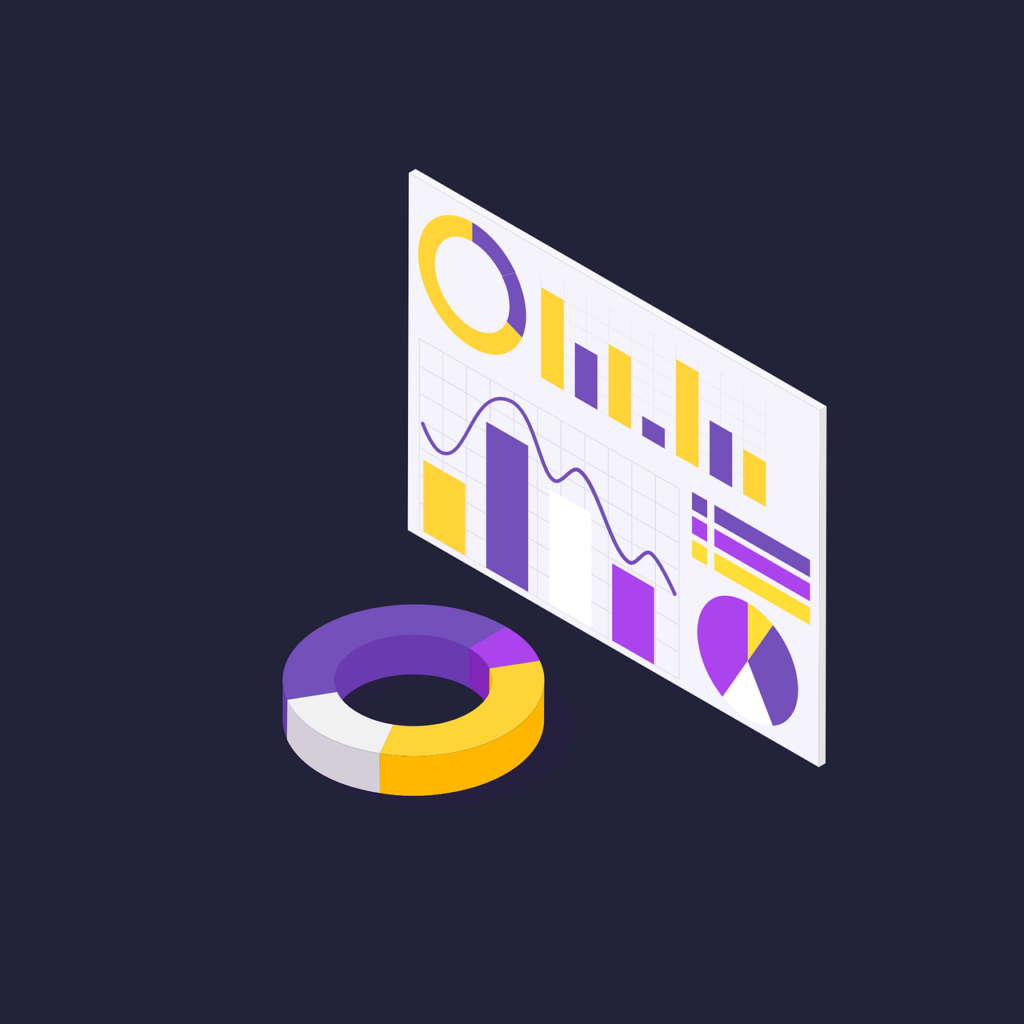
HR Analytics
HR analytics is the application of statistics, modelling, and analysis of employee-related factors to improve business outcomes. The key aspect of HR analytics is to provide data on the impact the HR department has on the organization as a whole. Establishing a relationship between what HR does and business outcomes – and then creating strategies based on that information – is what HR analytics is all about.
60% of HR departments anticipate to invest in predictive analysis, 53% in process automation, and 47% in artificial intelligence over the next three years.
| Table of content |
| HR Analytics: Simplified |
| The Central Question: What All Do We Track? |
| Three Levels Of HR Analytics And Reporting |
| How should HR Analytics be implemented? |
| HR Analytics Steps |
| Conclusion |
HR Analytics: Simplified
Is it surprising that most indicators of human capital management are more closely related to processes than to results? After all, counting money is easier than measuring happiness. Counting hours is easier than analyzing competence. Counting days is easier than estimating potential. Measurement is important for those situations where measurement is essential for management
Management can be based on certain hypotheses, and it is not necessary to prove them all in order to know if management has been successful. For example, a handshake and a smile from an employee tell more about his or her ‘‘engagement’’ than an opinion poll. A sincere pat on the shoulder can do more to motivate than a bonus calculated with a rigorous algorithm. With interpersonal relationships, common sense is a key we should not forget. For many managers, measuring processes makes them feel in control. Information about the past is important as long as it helps us understand the present and enables us to make decisions about the future
In the recent times, the various government’s across the globe has been able to save valuable lives of people and other livestock’s basis the smart usage of Analytics during pandemic and war conflict times. Not only they know where it has been causing havoc in the past or where it is now but it has with some degree of probability now started to even predict where it will be in near future and thus taking necessary actions. Trying to predict the future with certainty is always beyond our intellectual possibilities, even with wide and accurate measurements. Yet trying to predict the
Thus, HR analytics demonstrates the causal relationship between the activities exacted by an HR department and the business outcomes that result from this activity. Once this causal relationship is discovered, HR analytics professionals can devise and implement a strategic plan to assist the business in attaining better outcomes.
The Central Question: What All do we track?
In business, there are five ways to measure anything. They are cost, time, quantity, quality, and human reaction. The central question is: Which is most important to track? The answer is: It depends. If measurement is an activity and activity is expense, it follows that we don’t want to waste our time on metrics of little value. Value comes from knowledge of things that matter. And what matters is a business question, not an HR question: what matters at what points in time and for what organizational purpose. This necessitates a look at the Analytics stages following.
- Recording all the activities which we do (hiring, paying, training, coaching, and retaining)
- Relating the work to our organizational goals.
- Comparing results and outcomes with benchmarked organizations
- Understanding past behavior and outcomes (Descriptive Analytics)
- Predicting future probabilities (Predictive Analytics)
The HR needs to know and be able to explain why, what, and how it is doing what it does. It is only reasonable that when we ask for resources, we explain what we are going to do with them and the value that we intend to produce as a result. If we cannot provide contrasting data, management is obliged to shift resources from ‘‘us’’ to ‘‘them.’’
Three Levels Of HR Analytics And Reporting
Descriptive Analytics
This is reporting of the basic metrics, their frequencies and percentages by various cuts using the tools like SAS/Reports and can be monthly, quarterly or annual reports. It provides “What happened”. The primary focus is on cost reduction and process improvement. From it, we begin to see trends from the past; yet, it is risky to extrapolate from the past into the future, considering the volatile, rapidly changing markets of today and likely tomorrow. It includes, for example, dashboards and scorecards; workforce segmentation; data mining for basic patterns and periodic reports.
Predictive Analytics
It covers a variety of techniques (statistics, modelling, data mining) that uses current and historical facts to make predictions of future. It’s about probabilities and potential impact. It involves, for example, models used for increasing the probability of selecting the right people to hire, train and promote. It provides “What can happen”.
Prescriptive Analytics
Prescriptive analytics outlines decision options and workforce optimization. It is used to analyze complex data to predict outcomes, provide decision options, and show alternative business impacts. It involves, for example, models used for understanding how alternative learning investments impact the bottom line. It provides “How to make it happen”.
Predictive and prescriptive analytics interact just as doctor’s diagnosis and prescription. The doctor tells that if you take this medicine or follow a certain regimen, you will be cured. That is doctor’s prediction. When you read the prescription, it tells you what is necessary to validate the prediction in terms of which medicine needs to be taken under what conditions. Similar is in the case of business as well. In business the model will connect people policies, products and processes to achieve some improvement in performance. The model predicts certain patterns or relationships that interact to obtain the desired outcomes.
How should HR Analytics be implemented?
HR professionals gather data points across the organization from sources like Employee surveys, Telemetric data, Attendance records, Multi-rater reviews, Salary and promotion history, Employee work history, Demographic data, Recruitment process and Employee databases. HR leaders must align HR data and initiatives to the organization’s strategic goals. Once data is gathered, HR analysts feed workforce data into sophisticated data models, algorithms, and tools to gain actionable insights.
These tools provide insights in the form of dashboards, visualizations, and reports. Being HR Professional it would be helpful to know basics about Statistical Equation Modelling (SEM) which provides a useful insight into causal relationships analysis. Regression analysis also does afford HR leaders an opportunity to look at multiple pieces of data simultaneously and help prioritize the impact of people data on business outcomes. Most importantly, don’t let the statistics be a barrier as the option of identifying someone internally or hiring external consultants for analysis is always feasible.
An HR leader that uses analytics properly to show business value will:
- Calculate return-on-investment for (nearly) everything that they do.
- Give evidence-based advice on how to drive the business from a people perspective.
- Be pursued by line-of-business leaders to help them reach business targets.
- Take accountability for a portion of the organization’s financial health.
- Show results and not just HR activity completion (e.g. survey response rates).
- Create an HR strategy that has direct impact on the bottom-line.
Two strategies to analytics should be taken to maximize effectiveness a
HR Analytics Steps

Starting with the End Goals in mind
An organization must first determine the top two to three most critical outcomes on which to focus. Example outcome variables can be productivity, turnover, customer satisfaction, cost, safety data related items etc.

Represent outcomes using numbers
An organization must first determine the top two to three most critical Next determine how the data is currently captured in the organization. Each outcome measure must be assessed in terms of frequency, level of measurement (by business unit, by manager, by function) and the owner of each of the outcome measures. The goal is to have apples-to-apples comparisons of the data—which means that if you want to look at productivity numbers, you need to have productivity data that is measured at the same interval (e.g., monthly) and at the same level for each manager.

Objective Analysis of critical and key data
This requires advanced statistical knowledge to link the data. These data are critical when triaging analytical opportunities. Triage is the process of examining available analytics opportunities to determine which should receive priority. By examining the data on the level and distribution of existing outcome data, it is possible to identify where there may be opportunities to raise the average outcome or shift the distribution of outcomes. Also structural equations modelling helps to determine, for example, whether employee attitudes about work-life balance are a cause-and-effect driver of increased customer satisfaction.

Identify available intervention options and their costs
At these action-planning stage focus activities at the systemic, organization wide, line of business or work-unit level. The investments focus should be on those employee processes/skills/attitudes/ demographics, which have been shown to have a direct impact on the organization’s desired business outcomes.

Measure and Adjust or Re-prioritize
In the last step, re-measure to assess progress and calculate actual return-on-investment. Business leaders understand the importance of goal setting and measurement. They also understand the importance of creating a culture of measurement and accountability. Like other organizational decisions, leaders should make slight adjustments to initiatives along the way based on regular measurement results.
Conclusion
Overall, HR analytics has been identified as an HR technology trend for the present decade, as it has the potential to improve employee experience, which in turn leads to better business outcomes. It is hard to ascertain patterns and information buried inside enormous amounts of data without HR Data analytics. As an HR practitioner, you may use the power of analytics to become a strategic business partner who makes significant contributions to the business by delivering a convincing business case to key stakeholders.
Have you used HR analytics in your business before? Please let us know what you think in the comments section below.
